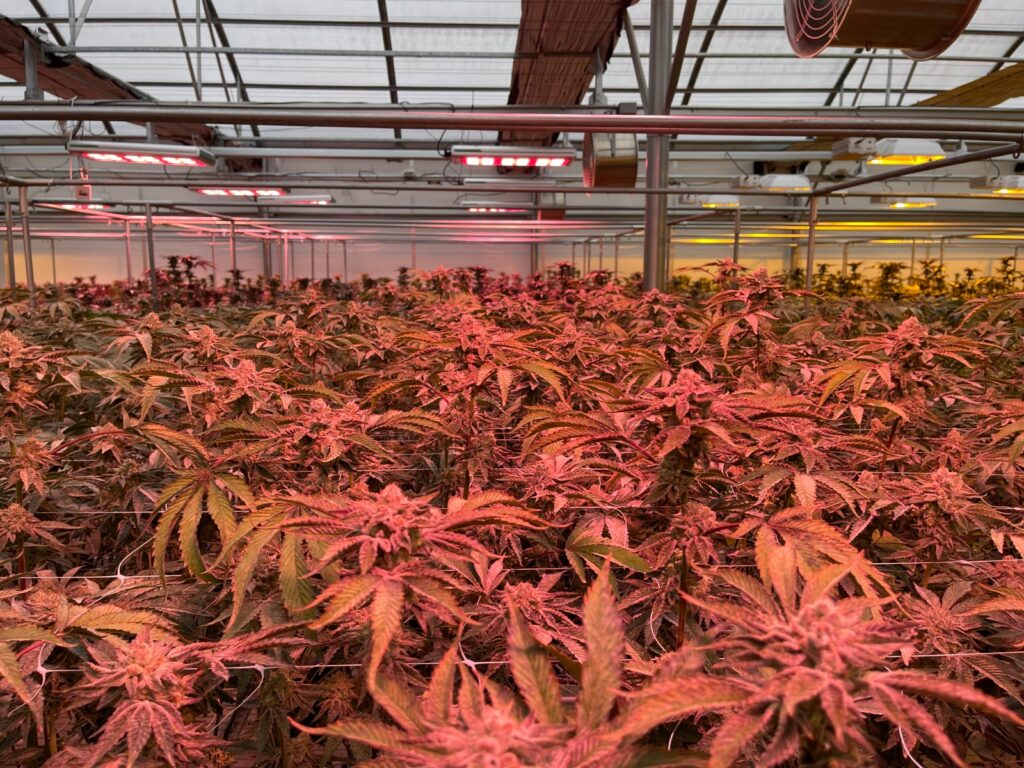
1. Introduction
In the vibrant world of greenhouse gardening, the key to thriving plants lies in providing the right amount and quality of light. A well-thought-out greenhouse lighting strategy is not just about illuminating the space; it’s about creating an environment where plants can flourish. Let’s delve into the essential aspects of greenhouse lighting and how it can transform your gardening experience.
2. Understanding Plant Lighting Needs
Plants, like people, have distinct preferences when it comes to light. Recognizing these variations is fundamental to creating an environment where every plant can reach its full potential.
Varied Light Requirements for Different Plant Species
Different plants thrive under different light conditions. Some love basking in direct sunlight, while others prefer a more filtered glow. Understanding the light preferences of your specific plant species is the first step in providing optimal conditions for growth.
The Role of Light in Photosynthesis
Light is the energy source for photosynthesis, the magical process by which plants convert light into the fuel they need to grow. Ensuring that your greenhouse receives the right amount and quality of light directly influences the efficiency of this process.

3. Types of Greenhouse Lighting
The market offers various options for greenhouse lighting, each with its own set of advantages and considerations.
3.1 Overview of Common Greenhouse Lighting Options
- High-Pressure Sodium (HPS) Lights: Traditional and effective for flowering plants.
- Metal Halide (MH) Lights: Ideal for promoting vegetative growth.
- Light Emitting Diode (LED) Lights: Energy-efficient and versatile.
3.2 Pros and Cons of Each Type
- HPS Lights: Proven performance but generate more heat.
- MH Lights: Excellent for vegetative growth but may lack efficiency.
- LED Lights: Energy-efficient, customizable, and with a longer lifespan.

4. Spectrum Considerations
The light spectrum is a crucial factor in greenhouse cultivation, influencing plant development at various stages.
Significance of the Light Spectrum in Greenhouse Cultivation
Plants require different wavelengths of light for photosynthesis, and a full spectrum mimics natural sunlight, supporting overall plant health.
Matching Spectrum to Different Growth Stages
Customizing the light spectrum based on the growth stage of your plants enhances specific processes, such as encouraging flowering or promoting vegetative growth.

5. Intensity and Duration
Getting the intensity and duration of light right is vital for successful greenhouse cultivation.
Determining the Right Light Intensity for Plants
Different plants have different light intensity requirements. Use a light meter to measure and adjust the placement or intensity of lights accordingly.
Importance of Adjusting Light Duration
Just like intensity, the duration of light exposure plays a role in plant development. Understanding the natural light cycles of your plants helps in creating an optimal lighting schedule.
6. Energy-Efficient Solutions
In a world increasingly focused on sustainability, opting for energy-efficient lighting solutions is both environmentally conscious and economically beneficial.
Advantages of Energy-Efficient Lighting in a Greenhouse
Energy-efficient lights not only reduce operational costs but also contribute to a greener footprint. LED lights, in particular, stand out for their efficiency in converting electricity into usable light.
LED Lights as a Sustainable Option
LED lights not only save on energy but also offer a longer lifespan, reducing the need for frequent replacements. Their versatility and customizable features make them an excellent investment for greenhouse owners.
7. Customization Features
The ability to customize lighting conditions in your greenhouse is a powerful tool in your gardening arsenal.
Importance of Customizable Settings in Greenhouse Lights
Choose lights that offer adjustable settings for intensity and spectrum. This flexibility allows you to cater to the specific needs of different plant species and adapt to changing seasons.
Tailoring Light Conditions to Plant Requirements
Experimenting with light conditions based on the unique requirements of your plants can lead to optimal growth. From adjusting intensity for seedlings to providing supplemental lighting during cloudy days, customization is key.
8. Budget-Friendly Options
Balancing your budget while investing in quality lighting is crucial for long-term success in greenhouse gardening.
Balancing Quality and Cost in Greenhouse Lighting
While there may be an initial investment, consider the long-term benefits of energy savings and reduced maintenance costs. A balanced approach ensures both quality and affordability.
Long-Term Savings with Cost-Effective Solutions
View your greenhouse lighting as a long-term investment. LEDs, despite a potentially higher upfront cost, often provide significant savings over their extended lifespan.
9. User Reviews and Recommendations
Learning from the experiences of fellow greenhouse owners can provide valuable insights into the practicalities of different lighting options.
Considering Experiences of Other Greenhouse Owners
Explore online forums, reviews, and testimonials from growers who have hands-on experience with the specific lighting systems you are considering. Real-world feedback can guide your decision-making process.
10. Case Studies
Real-life examples of successful greenhouse lighting setups showcase the potential and possibilities for your own garden.
Successful Examples of Greenhouse Lighting Setups
Investigate case studies where greenhouse owners achieved remarkable results with their chosen lighting setups. These examples serve as practical guides and offer insights into potential outcomes.
11. Environmental Impact
Considering the environmental impact of your lighting choices aligns with the growing emphasis on sustainable practices.
Evaluating the Eco-Friendliness of Greenhouse Lighting
Assess the environmental footprint of different lighting options. Opting for energy-efficient and eco-friendly lights contributes to a more sustainable approach to greenhouse operations.
Reducing the Carbon Footprint in Greenhouse Operations
As environmental awareness increases, greenhouse owners are seeking ways to reduce their carbon footprint. Choosing sustainable lighting solutions is a significant step toward environmentally conscious gardening.
Important: Flexstar offers a professional grow lighting solution for both greenhouse and indoor cultivation! Flexstar NOVA LED is a 1:1 HPS replacement and an ideal lighting option for your greenhouse.
Conclusion
In conclusion, the world of greenhouse lighting is as diverse as the plants it nurtures. From understanding the unique needs of your green companions to choosing the right spectrum and managing heat, every decision impacts the overall health and yield of your plants. By embracing energy-efficient solutions, customization features, and staying informed about industry trends, your greenhouse can become a haven for flourishing flora.
